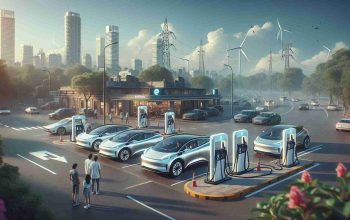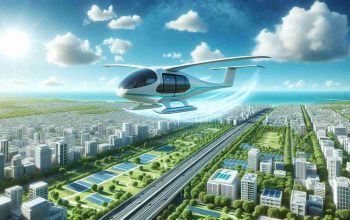Elon Musk revolutionizes the transportation industry once again with the unveiling of Cybercab, Tesla’s groundbreaking self-driving car. Unlike any other vehicle on the market, Cybercab features cutting-edge technology that eliminates the need for a steering wheel or pedals, setting a new standard for safety and efficiency.
Musk’s vision for the future of transportation goes beyond just convenience; he envisions a world where autonomous vehicles like Cybercab will save lives and prevent injuries, with potential safety benefits surpassing traditional human-driven cars by 10 to 20 times. The affordability of Cybercab, priced at under $30,000 and operating at a cost of only $0.20 per mile, makes it an attractive option for consumers looking to embrace the era of self-driving cars.
The key technology behind Cybercab lies in its utilization of computer vision and end-to-end machine learning AI, translating visual data into real-time driving decisions. While Tesla faces competition from industry giants like Waymo and Cruise, Musk’s streamlined approach prioritizes simplicity and cost-effectiveness, aiming to dominate the emerging robotaxi market through operational excellence.
As the race for autonomous vehicles continues to heat up, challenges such as charging infrastructure and regulatory hurdles remain significant obstacles to widespread adoption. In Europe, where regulations around autonomous driving are more stringent compared to the US and China, the need for swift regulatory updates is crucial to avoid falling behind in the autonomous vehicle industry.
While Europe boasts top technological talent, the continent must act quickly to level the playing field and compete with global leaders in autonomous transportation. Embracing innovative measures and facilitating a conducive regulatory environment will be pivotal for Europe to assert its position in the future of self-driving cars and maintain competitiveness in the evolving transportation landscape.
The Evolution of Autonomous Transportation in Europe: Navigating New Frontiers
The landscape of autonomous transportation in Europe is rapidly evolving, with groundbreaking innovations reshaping the way people move and commute. While the focus has primarily been on the technological advancements and regulatory challenges, there are several key aspects that deserve attention as we enter a new era marked by self-driving vehicles.
What are the most important questions surrounding the adoption of autonomous transportation in Europe?
One crucial question revolves around the infrastructure readiness to support a large fleet of autonomous vehicles. Ensuring that roads, signage, and communication systems are equipped to handle self-driving cars is paramount to the successful integration of this technology. Additionally, the impact on traditional transportation industries, such as taxis and public transportation, raises questions about job displacement and economic shifts in the labor market.
What are the key challenges or controversies associated with the widespread adoption of autonomous transportation in Europe?
One of the significant challenges pertains to the ethical considerations surrounding autonomous vehicles, particularly in scenarios where split-second decisions must be made, such as in unavoidable accidents. Balancing the safety of passengers, pedestrians, and other road users against legal liability and ethical dilemmas poses a complex challenge for policymakers and technology developers. Furthermore, data privacy and cybersecurity concerns raise valid controversies regarding the collection and protection of sensitive information gathered by autonomous vehicles.
What are the advantages and disadvantages of embracing autonomous transportation in Europe?
Advantages of autonomous transportation in Europe include the potential to reduce traffic congestion, improve road safety, and provide accessible mobility options for individuals with disabilities or limited transport alternatives. Additionally, the environmental benefits of autonomous vehicles, such as reduced emissions and optimized fuel efficiency, align with Europe’s sustainability goals and commitment to combatting climate change.
However, disadvantages such as the significant upfront costs of implementing autonomous technology, the potential for job displacement in transportation sectors, and societal resistance to trusting machines with critical driving decisions remain valid concerns that must be addressed as Europe navigates the complexities of autonomous transportation adoption.
In conclusion, as Europe stands at the forefront of the autonomous transportation revolution, addressing critical questions, overcoming key challenges, and balancing the advantages and disadvantages will be instrumental in shaping a sustainable and inclusive future of mobility in the region.
For further information on the latest developments and insights in autonomous transportation, visit EU official site.



